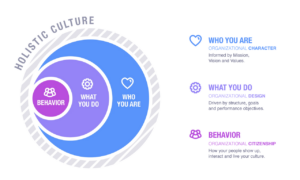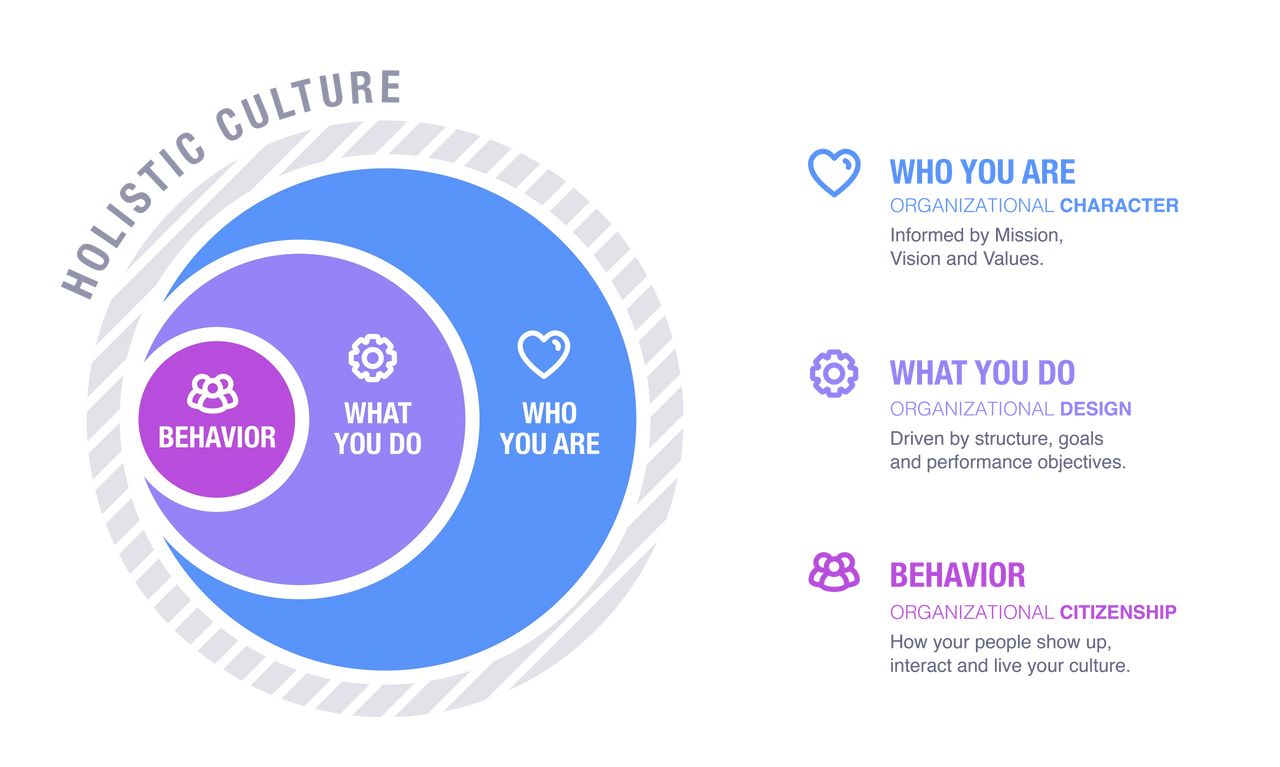Are your values and goals in alignment?
 There are inflection points that we see in business, often related to strategy. Expanding into new markets, expanding product or service offerings, reacting to changes in the market or the world – as we saw with Covid and we are seeing again with the war in Ukraine.
There are inflection points that we see in business, often related to strategy. Expanding into new markets, expanding product or service offerings, reacting to changes in the market or the world – as we saw with Covid and we are seeing again with the war in Ukraine.
Leaders are generally diligent about anticipating and planning and adjusting for these strategic inflections. It is widely accepted in business that strategy is a fluid state and you must be nimble to stay competitive.
These types of changes can send shockwaves through a company culture, yet culture rarely gets the same amount of due diligence or strategic intention.
Too often leaders feel that their culture is evergreen. A founder’s story of mission and values, plastered on a wall that everyone can see. But the truth is that every point of inflection, strategic or otherwise, changes the culture. When your culture isn’t being managed and owned as intentionally as the rest of your business – guess what? It will eventually own you.
This is not an exhaustive list, but I want to highlight a few very common changes that can cause cultural inflection points:
- Leadership
- Growth/size
- Product/Service
The commonality being that often these changes also lead to changes in company goals and performance objectives.
I recently met with a CEO who was in her second year at the helm, having taken over for a longtime founder. In the 25 year history of the company, the founder built an incredible culture that felt like family. Everyone valued the customer as their top priority, they genuinely cared for their communities, and in the first 20 years of the business the company was a local hero. Everyone wanted to work there and be affiliated with that brand.
But in the five years prior, the company grew rapidly. Grew into new markets, tripled their headcount, experimented and picked up new product offerings, moved their headquarters and went public.
This CEO very aptly acknowledged that as their goals as a company were changing, the original company values were becoming less relevant. At best they were inauthentic, and at worst they were a barrier in driving the kind of performance she needed to be successful.
For example, in the past, the customer was always right. It was a service-oriented culture, with people being the core value. But moving forward, they really needed to embrace the mentality that the customer could actually really benefit from the education her company could provide. The customer is not always right, which is why they are a customer, they need guidance.
The employees really got lost in the evolution of their identity and this nuanced shift to what “service” meant.
Organizational Character Vs. Organizational Design
We refer to Organizational Character as the “soul” of the organization. This is what becomes of the mission, vision and values.
The Organizational Design, as you know, is made up of the nuts and bolts of people operations, functions, and the goals and objectives of the organization.
These two things have to work in harmony, they have to compliment and reinforce each other. They cannot function independently.
A company cannot say that they value family and balance, and then have goals and a structure that requires people to work 60 hours a week. That is inauthentic, it will cause ambivalence, and lead to attrition.
When companies hit these cultural inflection points, they need to sit down and assess the alignment of their character and their design, and think about the behaviors and citizenship they are trying to drive.
Values don’t have to be evergreen. They have to be authentic.
Companies regularly put out a new strategic plan every five years. Values, behaviors and cultural pillars should be evolving alongside strategy.
Revisiting the triggers of culture change:
· Leadership
- Changes in ownership and changes in the c-suite will trigger a domino effect of cultural change as new leader introduce new styles.
- Leadership changes also often come with changing performance goals and expectations.
· Growth/size
- When companies exceed 25 employees for the first time, this often requires a fundamental change to the leadership structure. A founder is often introducing a CEO or COO at this stage of growth. The small intimate dynamic has to become more inclusive and open as new personalities are welcomed.
- Major increments of growth, such as exceeding 200 employees, and then 500, also fundamentally change a company and its people from the previous dynamic.
· Product/service
- As companies expand their offering, expand their team, and also expand the skill sets, expertise and diversity of their people, they need to evolve and adjust their culture to apply to the collective, and to support the goals needed to sustain a more diverse portfolio.
Leadership Exercise:
Reflect on your current values. Are they the original company values or have they changed along the way? What behaviors would these values drive in your people? What expectations exist for someone to “live” these values at work?
Reflect on your performance objectives. What behaviors do you seek in top performers, and those that are helping your company reach its goals?
Are these working in harmony?
Let’s chat!

